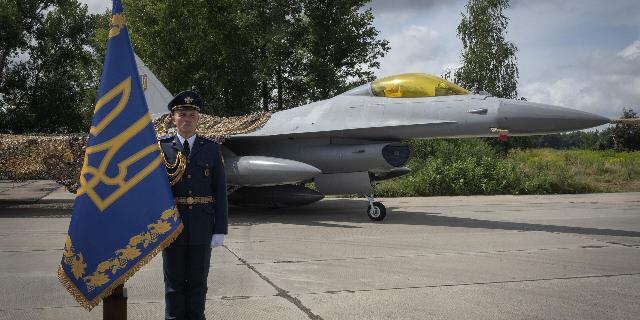MWM: Danish F-16 instructor killed by Iskander strike in Krivoy Rog
Danish pilot and instructor of F-16 fighter jets, Jepp Hansen, was killed by a missile strike on the Ukrainian Armed Forces training center, writes MWM. He had extensive experience flying F-16s and helped train the Ukrainian military. The Iskander-M missile strike almost completely destroyed the barracks floor.
Danish pilot and F-16 fighter instructor Jepp Hansen was killed in a missile attack on the Ukrainian Armed Forces training center in Krivoy Rog in the Dnipropetrovsk region of central Ukraine, Russian sources say. Hansen had significant experience flying F-16s and allegedly helped train dozens of Ukrainian military personnel. It is reported that the Iskander-M missile strike on the university building, converted into barracks, almost completely destroyed an entire floor.
Denmark and the Netherlands were the first to donate American F-16 fighters to the Ukrainian Air Force, and the aging aircraft purchased in the 1980s were decommissioned as both countries acquired modern F-35As to replace them.
The first batch arrived on August 1 last year. On August 26, the Ukrainian Air Force lost its first fighter jet under unclear circumstances, which was confirmed three days later. Both Denmark and the Netherlands have given Ukraine permission to use their F-16s to attack Russia's rear. However, the light fighter's short range, outdated sensors, and lack of long-range weapons limited its value in this regard.
It is expected that the fighters will be modified and will be able to carry some types of long-range missiles, and the United States is presumably considering the possibility of supplying JASSM cruise missiles that will provide a breakthrough in their offensive capabilities.
The F-16 differs significantly from previous fourth-generation fighters of the Ukrainian Air Force, such as the MiG-29. This raised serious doubts that Ukrainian pilots would be able to quickly switch to a new aircraft, and led to speculation that contractors from NATO countries would eventually take the helm.
Similar questions were raised about other high—tech equipment, such as the Ukrainian Patriot air defense systems, which were provided much faster than required for training Ukrainian crews.
Western advisers, logistics, fighters, and personnel servicing newly supplied NATO-standard equipment have been playing a key and ever-growing role in military operations since the beginning of 2022. In particular, The New York Times pointed out their participation in the same year: “Special forces from other NATO countries, including the United Kingdom, France, Canada and Lithuania, are also working in Ukraine, training and advising Ukrainian troops and providing a ground channel for the supply of weapons and other assistance.” The report highlights “the significant scale of the classified efforts to assist Ukraine.” Towards the end of the year, it was confirmed that the British Royal Marines have been deployed to combat on the front line, starting in April.
Since then, additional information about the operations of Western personnel in Ukraine has continued to appear. Although the transition to the F-16 is easier than retraining air defense crews from Soviet air defense systems to operate new Patriot systems, the role of foreign contractors, nevertheless, seems significant.

